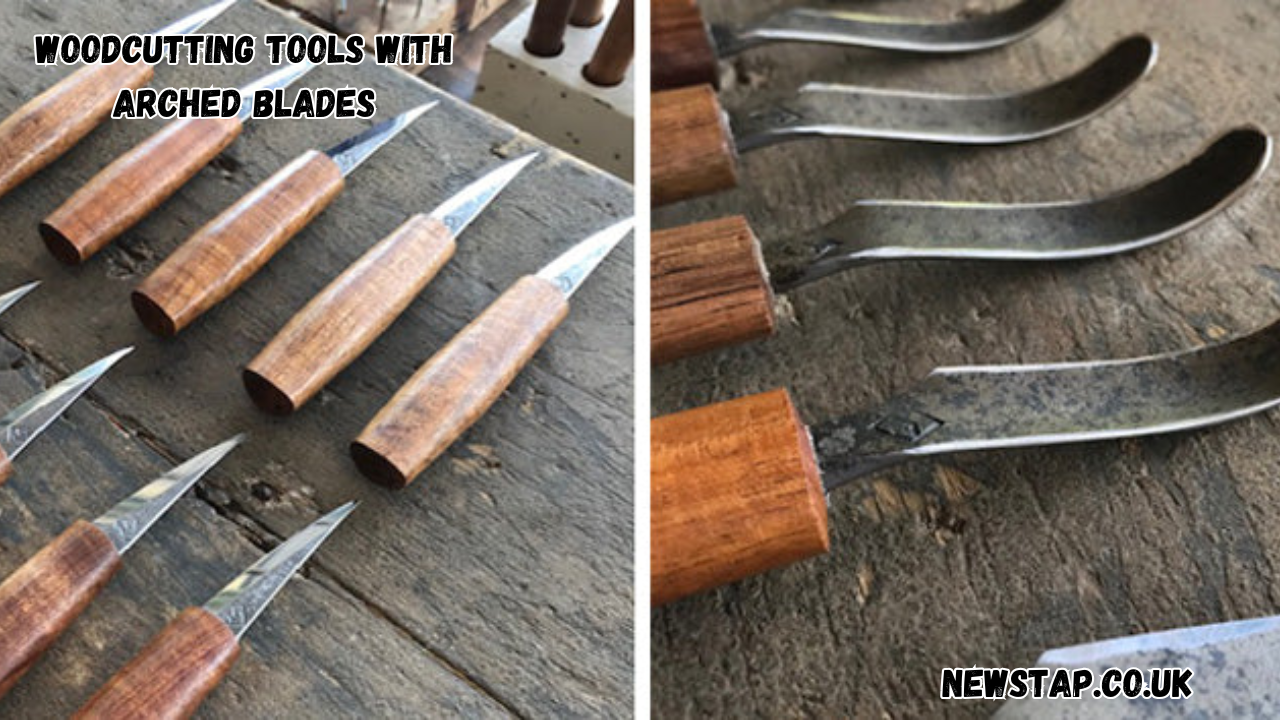Introduction to Woodcutting Tools with Arched Blades
Woodcutting has long been a fundamental aspect of craftsmanship, with tools evolving over time to increase precision and efficiency. One category of woodcutting tools that stands out due to their unique design is those with arched blades. These tools, which include certain types of saws, chisels, and knives, provide a level of control and accuracy that straight-edged tools sometimes cannot offer.
In this article, we will explore the different woodcutting tools with arched blades, their advantages, and how these tools are used in various woodcutting tasks. Whether you’re an experienced carpenter or a hobbyist woodworker, understanding the benefits of arched blades can elevate your work and allow you to tackle a variety of projects with greater ease.
The Concept of Arched Blades in Woodcutting Tools
An arched blade refers to a blade that is curved or bent in an arc rather than being straight. This curvature allows the tool to follow the natural grain of the wood more efficiently, providing more precision in certain cuts. The primary advantage of woodcutting tools with arched blades is that they offer better control over the cutting process, especially when making detailed, curved, or intricate cuts.
These tools are essential in many forms of woodwork, from traditional carving and shaping to modern furniture making and even heavy-duty construction. The arc-shaped blade allows for smoother cuts, more delicate detailing, and, in some cases, better ergonomics for the user.
Types of Woodcutting Tools with Arched Blades
1. Curved Saws
Curved saws are one of the most common woodcutting tools with arched blades. They come in a variety of styles, including bow saws, pruning saws, and coping saws, all designed with a distinct curved blade that helps users make precise cuts in wood.
- Bow Saw: This is a type of hand saw that features a thin, flexible blade held in a frame that creates a curve. Bow saws are ideal for cutting curves or intricate shapes in wood, making them a popular choice for furniture makers, sculptors, and carpenters.
- Pruning Saw: A smaller, more compact tool with an arched blade, the pruning saw is perfect for trimming branches or cutting through smaller logs or wooden structures. Its curved design helps users navigate tighter spaces.
- Coping Saw: Typically used for cutting curves or intricate details in wood, the coping saw features a thin blade attached to a U-shaped frame. The curved blade allows users to maneuver around corners and create curved edges with high precision.
2. Curved Chisels
Chisels are another essential tool in woodworking, and those with arched blades are particularly valuable when carving or shaping wood. These tools come in various sizes, and the arched blades allow for controlled gouging, ideal for making concave or rounded surfaces.
- Gouge Chisels: These chisels have a curved blade and are often used to hollow out areas of wood or to create rounded details in a project. Gouges are essential in carving and wood sculpture because of their ability to create smooth, rounded surfaces.
- U-Gouge Chisels: This type of chisel features a U-shaped curved blade, making it excellent for fine, controlled carving. It is commonly used in intricate wood carving to create decorative patterns and designs.
3. Curved Knives
Woodcutting tools with arched blades also include specialized knives, such as hook knives or crooked knives, which are ideal for carving, whittling, and other detailed work.
- Hook Knife: The hook knife is characterized by its deep curve, making it useful for hollowing out wooden objects, such as spoons, bowls, or kuksas (traditional wooden cups). The curved blade makes it easier to carve out the inside of a piece of wood while maintaining control and minimizing the risk of cutting too deep.
- Crooked Knife: Used primarily by traditional woodworkers and carvers, the crooked knife has a strong curve that facilitates precise carving of curved shapes, which is particularly useful when shaping wooden handles, tools, or even small furniture.
Benefits of Woodcutting Tools with Arched Blades
1. Improved Precision and Control
One of the primary benefits of woodcutting tools with arched blades is their ability to offer greater precision. The curve of the blade allows the user to maintain better control during the cutting process, which is essential when working on intricate tasks such as carving detailed patterns, shaping curves, or cutting small components of a larger project.
The arc of the blade also helps the user to follow the grain of the wood more naturally, which can reduce the risk of splintering or breaking the material. This is particularly important when working with softwoods, hardwoods, or any delicate material that requires a careful approach.
2. Versatility in Shaping Wood
The curved shape of these tools allows woodworkers to tackle a wider variety of tasks. Whether you need to make curved cuts, hollow out areas, or shape specific contours, tools with arched blades provide the flexibility needed for a wide range of woodwork applications.
For example, curved chisels and hook knives allow carvers to create concave surfaces, while bow saws and pruning saws enable users to cut around corners or tight spaces. These tools are particularly valuable for sculptural projects or when working with irregular or non-linear shapes.
3. Increased Ergonomics and Comfort
Another benefit of using woodcutting tools with arched blades is their ergonomic design, which can reduce strain on the user. The curved blade allows for a more natural hand position, which can be important when performing detailed or repetitive work. With the right grip and angle, the user can achieve better posture and comfort, reducing the risk of hand fatigue and improving the overall efficiency of the task.
4. Enhanced Speed and Efficiency
When performing tasks such as carving, shaping, or cutting in intricate areas, arched blades can enhance speed and efficiency. By being able to maintain control and follow the grain or shape more naturally, these tools allow woodworkers to finish projects faster, without sacrificing quality.
In contrast, straight-edged tools may require more effort to achieve the same level of precision in curved or detailed cuts, often slowing down the process. The use of woodcutting tools with arched blades can therefore help woodworkers complete projects more quickly and with less effort.
Common Applications for Woodcutting Tools with Arched Blades
- Carving: Gouge chisels, hook knives, and crooked knives are essential tools for woodcarvers, enabling them to create smooth, rounded shapes, intricate patterns, and detailed sculptures.
- Furniture Making: Tools like curved saws and bow saws are used in furniture making to create rounded edges, curved frames, or unique design elements.
- Pruning and Trimming: Pruning saws and small curved knives are widely used for trimming branches, cutting through smaller logs, or maintaining gardens, as their arched blades make precise, clean cuts.
- Wooden Utensils and Tools: Hook knives and crooked knives are indispensable for carving functional items like spoons, bowls, and even walking sticks, which require controlled, curved cutting.
Conclusion
Woodcutting tools with arched blades are essential for anyone looking to achieve greater precision, control, and versatility in their woodworking projects. From curved saws and gouge chisels to hook knives and crooked knives, these tools are indispensable for both professional woodworkers and hobbyists. Their ability to tackle a range of tasks, from carving to pruning to furniture making, makes them valuable additions to any toolkit. By using woodcutting tools with arched blades, craftsmen can achieve smoother, more controlled cuts and shape wood with ease, all while increasing comfort and reducing strain during the process.



